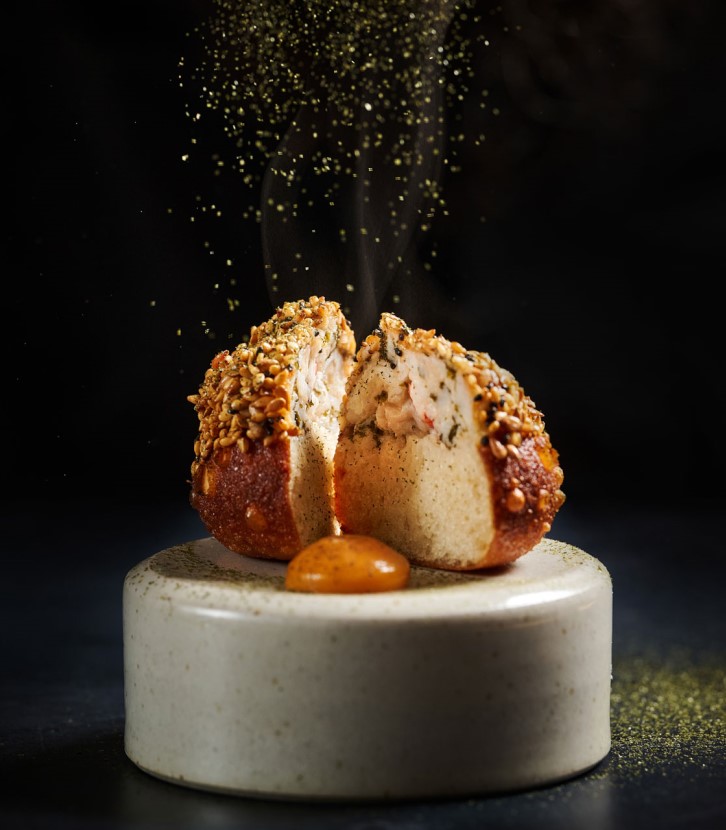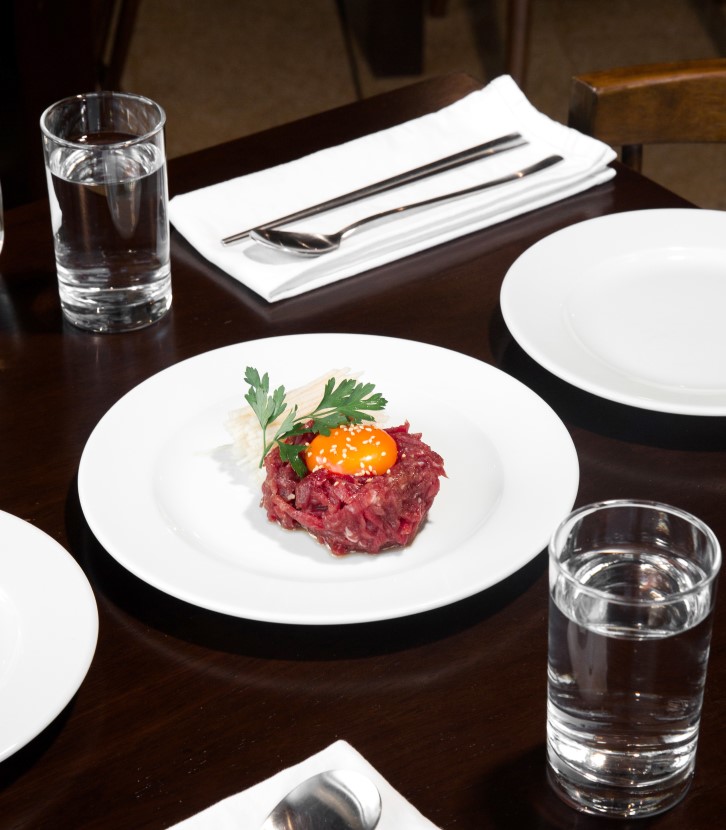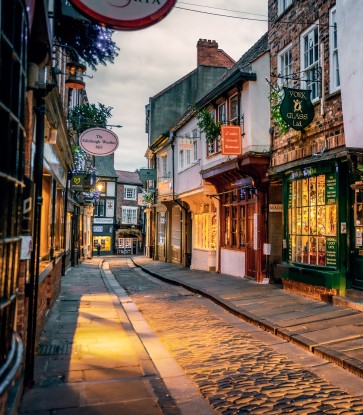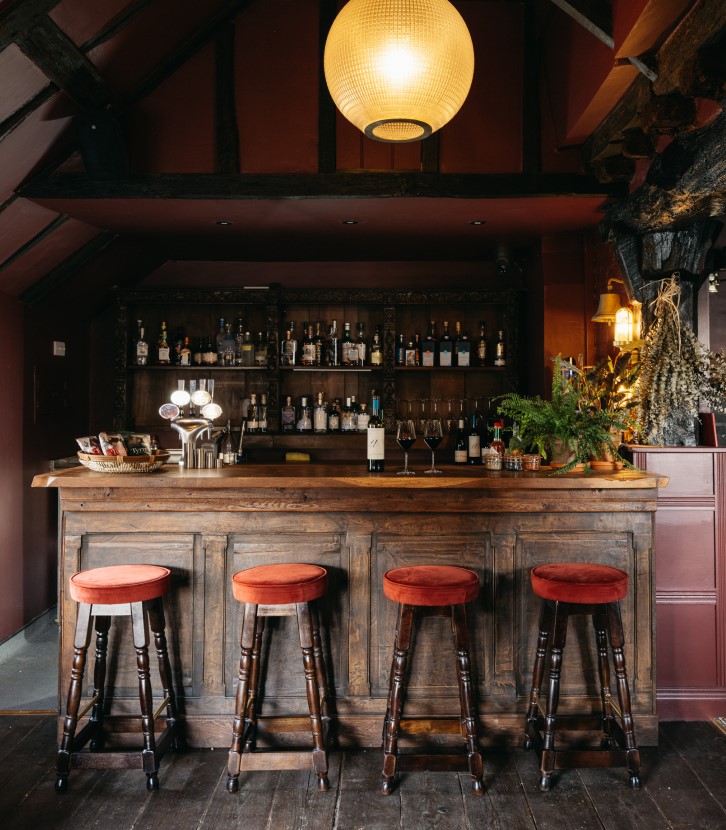The Bib Gourmand award is our way of recognising restaurants that offer good food at a great price. While all Bib Gourmands are unique in style and approach, they share the same spirit of generosity and a commitment to quality cooking. That’s why, in this series, we’re highlighting the MICHELIN Guide Inspectors' Bib of the Month. These restaurants are the bedrock of our selection, providing an affordable dining option that doesn’t skimp on precision, skill or flavour. From cosy pubs to buzzing counters, we’ve got a Bib for you.
Our latest Bib of the Month is a relative newcomer to the good value family. Palmito, located in Brighton’s seaside twin of Hove, was awarded its Bib Gourmand in early 2024. It serves globally influenced, ‘spice driven’ small plates and is a restaurant that’s bang on-trend with modern dining habits.
This is what one of our Inspectors had to say on why Palmito is such an exciting addition to the Brighton and Hove restaurant scene:
“The first thing you notice when you enter Palmito is how small it is; but into this tiny space you’ll find enough skill and passion to fill a restaurant three times its size. ‘Eclectic’ is the word I would use to describe the extensive menu here. The core ingredients themselves are not unusual, and the names of the dishes are all familiar, but the combinations stand out for being a little different to the norm. For example, an empanada is filled with prawns and chorizo, then served with pickled red cabbage and smoked aioli. All the dishes are vibrant, full of complementary flavours and eminently satisfying – and at fantastic prices too of course – making it a prime example of the Bib Gourmand award. As you look around the room all you see are smiling faces, people joining together in friendship and eating good food. The team appear happy too and, overall, I’d say this is very much a place filled with love.”

To discover more about Palmito, we spoke to its Chef-Owner Diego Ricaurte.
What was the idea behind Palmito? How would you describe your approach to food and cooking?
I come from a famous neighbourhood in Quito, Ecuador – famous for being dangerous, but also for having one of the best streets for food in the city. Out of necessity, people would turn an extension of their homes into 'puestos' and sell all kinds of food to make ends meet or for extra income. My young mother would work during the day and study hairdressing in the evenings, so I spent a lot of my time outside.
Whilst some of my friends and cousins would go out and get up to no good, I would just hang out at these puestos and eat there. The flavours of the food and kindness of the people made them my favourite place to be. When we moved to Europe what I missed the most were these puestos. I love travelling and so wherever I go I try to find places like them. Places where local stories are told daily and the mundane becomes more than a pastime.
So, I moved back to Brighton, and for one year I saw this tiny takeaway in this really dodgy part of my neighbourhood – and my heart told me that's where my puesto was going to be. We opened at the start of the cost of living crisis, everything went up in price and it was the worst time to open an independent restaurant. But at the same time, I thought that in hard times, we Latinos know how to make things work, and I wanted to bring that 'salsa' into Brighton. It was scary but I like cooking simple, comforting food and that fills my heart with joy. I felt that it doesn’t matter how small or weird the place might be; if I offer tasty food, people might enjoy the concept even if they didn’t understand it.
My approach to food is simple. Food is about sharing and community. So the food is from my childhood, my travels and also from my staff: their stories, their dreams, their ideas. It has to be rustic, using old techniques and working closely with our suppliers who I've met during my time in Brighton. It makes me sad that we don’t have weekly markets in our city, but I go to farms and meet growers. Most of my suppliers I’ve met that way. I cook a simple menu that changes according to what’s available and I use accessible ingredients. After all, I grew up eating potatoes, offal and fresh fish, not caviar and truffle.
Tokyo by The MICHELIN Guide
What price range can customers expect and how are you able to keep your prices affordable?
People can have a good meal from around £25 to £50 per head. Costs keep going up and up, yet the moment a restaurant starts to raise prices, it will lose a few customers. I think this comes from the fact people seldom give restaurants a second chance, and also what people perceive as good value when eating out.
I think the solution to this is empowerment and delegation. I wanted to keep a market/street food approach not only as a restaurant concept but also in the kitchen and how the kitchen is run. I don’t have a hierarchy in my kitchen and I’m very open about finances with my chefs. That way they’re not only learning cooking but they are understanding that this is a business. This has proved productive because we stick to the concept of simple food and we take care every step of the way. In doing this, I’ve been able to keep costs at a level where I don’t have to increase my prices. This added value is felt by our customers and it’s shown in the food we serve them.
What is the dish to order at Palmito?
Grilled hand dived scallop with ancho chilli & dulse seaweed butter and burnt cauliflower.
I think it’s this scallop dish because there is a story behind it. Before I opened Palmito, I found Frazer Pugh from The Hand Pick Scallop Company in Brixham on a Facebook group and bought some scallops for home. In Ecuador, we love grilling black scallops on weekends with a cold beer, so I like doing this at home. When I opened Palmito I wanted to have that on the menu, so Frazer started supplying us with 50 scallops a week.
One day my friend Chris, who’s a forager, brought me dulse seaweed and three-cornered leeks; so I made a butter with ancho chillies and the foraged ingredients. I grilled the scallops and the butter in the shells and served them all with some burnt cauliflower purée and a squeeze of lemon. People loved it.

A few months later Frazer called me and invited us to his boat in Brixham. We had just been open for a year and it was very exciting as we felt honoured. We went there to spend a few days with him; Frazer dived for scallops and I cooked them in a variety of ways. Lastly, I took the butter and we grilled some and he loved it so much he was just drinking the burnt butter. We drank mezcal and beer all through the night, grilling scallops until we were drunk.
I always have this dish on my menu when Frazer can dive. It reminds me of sunny weekends grilling seafood with friends and family.
Dining at Palmito features three elements that are very popular in modern restaurants: a sharing plates menu, an open kitchen and a charcoal grill. What do you think each of these brings to the dining experience?
I think the sharing plates are great because it gives people a chance to spend as little or as much as they wish. People still want to go out even if they can’t spend as much as before, so maybe on a weekday they might have a couple of plates but on weekends they can splash out. It works for us. I love working in an open kitchen and I think it's nice for people to see us work; it also helps the kitchen because when the front of house is busy we take the dishes out ourselves and I think people enjoy that experience.
I cook on an open fire because that’s how a lot of street food gets done, so it adds a lovely flavour to our food. It is nice because even on a cold day people see our fire as they walk by. Palmito means ‘palm heart’, so our fire is the heart of our restaurant and people feel happy when they see it. I think those three elements work in our market/street food concept because it makes you feel like you’re on holiday somewhere and you stumbled across a little shack serving fun food.

Can you tell us more about the inspiration behind the global influences on Palmito’s menu?
My last trip was to Galicia. I spent a week eating around there. I always visit MICHELIN Bib Gourmand restaurants and I went to some gorgeous ones – but the best was eating in the markets. I went early one morning to the Mercado de Abastos in Santiago. It was pouring with rain so I had some oysters from a fishmonger and a glass of albarino in a vinoteca in the market. The fishmonger told me that in one of the shops they will boil whatever seafood you order and bring it to you – so I did that! I had clams, followed by percebes and some sweet local shrimp, plus few more glasses of albarino.
In total I spent about 4 hours standing outside in that vinoteca eating and watching people walk by doing their grocery shopping. I would ask ‘what is this’ and ‘what is that’. At the end I got some amazing paprika. As I visited other markets I would ask where I can find someone to cook fish for me; so that way I learnt more about their cuisine and met wonderful people. When I came back to Palmito, I wanted to feel like I was still there so we grilled some squid, fried some potatoes in olive oil and made a little garlic herb sauce and finished it with paprika. When I shared the dish with the kitchen guys, I said to them ‘mmm, reminds me of Galicia’. Sharing is caring!
What steps do you take at Palmito to make your business more sustainable?
I think ‘eat less, eat better’ is the way forward! I know we are globally inspired so we do use things that are from miles away and the kind of food we offer means that we have to source things from abroad, which adds to CO2 levels and emissions. But although we are globally inspired, we are Brighton born! Therefore, our way to be sustainable is by working with other small businesses like ours, through our local community. We buy whole grass-fed lambs from Rosie Martin, a young shepherd just outside Brighton. We work with people like Shrub & Barcombe Nurseries for our vegetables. We are always looking for new people to work with.
We have a great relationship with the Brighton Food Partnership, a non-profit organisation that helps people understand where their food comes from, how to grow their own food and how to waste less food. We’ve been to their events and met farmers and producers, and it comes down to that idea of market food where we build a relationship with our suppliers and have such respect for their produce.
Later on in the process, we find ways to minimise waste and be more conscious of what we do, and to promote those things through the food we serve at Palmito. I believe that if we know the land around us and we understand where our food comes from in our local community, then we are given the ability to make our food decisions and those decisions then become more sustainable. It is a journey that we are on and the more we learn as a team, the more fun we have.
Love all things MICHELIN?
Sign up to our newsletter to hear from the MICHELIN Guide Inspectors
Get the Guide on the go with the free app
Set up an account to create lists & manage bookings

















